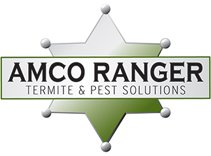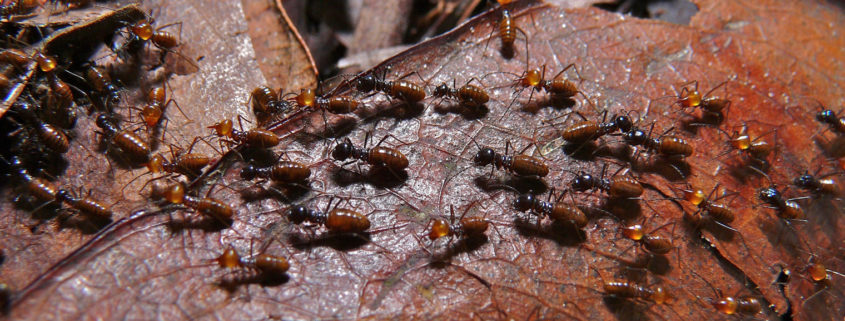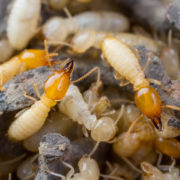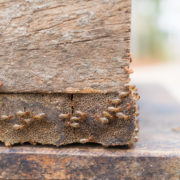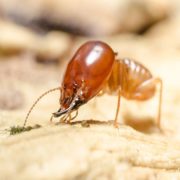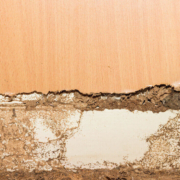What, Do, and How: Everything to Know About Termites
What to Know About Termites
Most homeowners don’t want to think about termites. It’s understandable, considering these pests can take down a structure in a very short period of time. Not only can they destroy a home, but many of the things within it, too. It’s important that as a homeowner however, you do understand how these pests live, and what they do. Knowing the answers to some common questions makes it much easier to fight against them, and maybe even keep them from invading in the first place. It’s for this reason that we’ve created this guide that tells you everything you wanted to know, or didn’t, about termites.
What do termites look like?
There are more than 40 different species of termites in the United States. Each species has distinct characteristics, but most of them look similar to each other. Termites are very small, about the size of an ant. They measure between one-quarter inch to one-half inch in length. They have soft bodies and straight antennae, unlike ants that have bent antennae. Worker termites are typically paler in color while swarming termites appear darker.
What do baby termites look like?
Baby termites do not have a transition phase from larvae to adult, as some other pests do. Instead, they hatch from eggs looking like a very small termite. Young termites are usually white in color.
What do termites eat?
Termites eat cellulose, the most abundant organic compound found in nature. It is the main component of plants and is even found in many everyday objects. Termites seek out this cellulose in plants, cotton fibers, paper products, and wood.
What causes termites?
There are a few elements that attract termites to a home. These include:
- Moisture, such as standing water or leaky pipes
- Wood that comes into contact with a home, such as stacked firewood
- Openings in a home’s foundation, walls, or roof
- Geography, as some areas are more prone to infestations
What color are termites?
Young termites are pale in color, typically white or off-white. Adult subterranean termite swarmers are solid black, while adult drywood swarmers are solid red.
Are termites attracted to light?
Termites are nocturnal. As such, they are attracted to light at night including porch lamps, motion lights, and light coming from the interior of the home. When swarming, termites are attracted to utility lights as well.
Can you hear termites?
There are three main sounds homeowners may hear if they have a termite infestation. The first is a dry rattle. When termites sense danger, they bang their heads against the walls of their tunnels to warn other termites. This causes a rattling sound. Termites also make a papery rustling sound as they move about the tunnels working. Lastly, homeowners may also hear a hollow sound when they tap the wood of their home. These are the voids left in the wood after termites eat their way through it.
Where do termites come from?
Termites come from the ground, where they build large colonies. Colonies are typically built in areas that have large trees or old, rotted wood. Termites can fly away from the colony and will fly about 50 feet at a time. Once they have found a suitable location to start a new colony, they will land and start to create one.
What Do Termites Do? Do termites fly?
Subterranean termites do fly during the swarming season when they look for a mate and start a new colony. These termites don’t fly well though, and after settling on the ground, soon lose their wings.
Do termites bite?
Termites can bite invading insects such as ants or termites of a different species. They can also chew through wood, causing extensive damage to homes. Termites, however, are not known to bite humans.
Does mulch attract termites?
Years ago there was a theory that chain stores were spreading termites through bags of mulch. This was proven to be untrue. However, there are certain things about mulch that termites like. It’s not the wood in mulch that attracts termites, but the moisture. Mulch can attract termites because it’s a good place for them to form their colony, or support an existing one.
Do termites bite humans?
Termites are not known to bite humans.
Does homeowners’ insurance cover termites?
According to the National Pest Management Association, termites cost American homeowners approximately $5 billion annually. Unfortunately, homeowners’ insurance does not usually cover the cost of termite damage. Infestations can often be prevented through regular home maintenance, which is the homeowner’s responsibility. However, certain damage the termites cause, such as a fire caused by wiring they chewed through, is covered by homeowners’ insurance.
The How’s of Termite. How can you tell if you have termites?
Termite infestations have some common characteristics. If you think you have termites, look for these signs.
- Clicking sounds in the walls, which is the termites banging their heads against a tunnel
- Wings that have been shed on windowsills or doorways
- The presence of white ants around the home, which homeowners often mistake termites for
- Hollow sound in wood around the home
- Doors and windows that are suddenly tight-fitting and hard to open
- Tunnels in wood or wood around the home
- Termite droppings, otherwise known as frass, which are small black marks or a dark powdery substance
How long do termites live?
The queen of a colony can live up to ten years. Typically, worker termites only live for one to two years.
What’s the Best Way to Get Rid of Termites? Call a Missouri Pest Control Service
One of the most common questions homeowners have is how to get rid of termites when an infestation has started. The only way to do it is to call a pest control service in Missouri. At Amco Ranger, we know how frustrating termites are, but we also know you don’t have to let them destroy your home. Call us today at (636) 441-2847 or fill out our online form. After inspecting your home for termites, we’ll use our knowledge and skill to get rid of the pests, and prevent them from coming back in the future.
